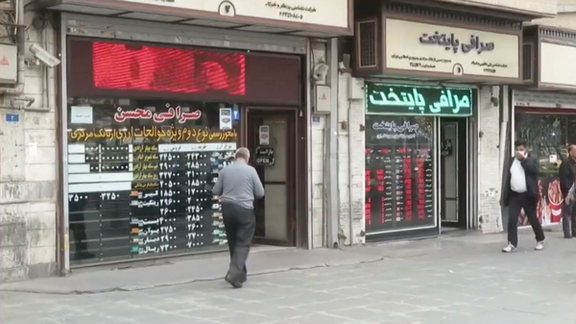Iran’s Currency In Freefall Spirals Into Chaos

The Islamic Republic’s currency rial has hit yet another low, sieving through the regime insiders who either remain in denial or blame the West for the catastrophic downfall.

The Islamic Republic’s currency rial has hit yet another low, sieving through the regime insiders who either remain in denial or blame the West for the catastrophic downfall.
As the dollar surpassed 430,000 rials , President Ebrahim Raisi replaced the chief of the Central Bank of Iran and ordered his economic team to come up with ideas to support the collapsing rial.
Raisi appointed Mohammad Reza Farzin as chief banker. Farzin, who has been the CEO of Bank Melli Iran since last year, was also chairman of the board of Karafarin Bank before that.
During the cabinet meeting where Farzin was appointed, Raisi stressed the importance of controlling the value of foreign currencies, asking central bank chief to “manage” the situation.

Since the current wave of protests began in Iran in mid-September the rial has fallen to record lows, losing more than a third of its value against the dollar, fueling inflation of around well over 50 percent. The rial has now lost about 80 percent of its value compared to mid-2021 and close to 50 percent since December 2021. Inflation is also skyrocketing. Food prices have jumped much faster than the overall inflation, with some items registering 100-percent increase in one year.
The impact of rial’s devaluation is still not fully felt in the market, but Iran faces the danger of hyper inflation in the coming months.
On Wednesday, Khabar Online, an Iranian conservative website published an article that said the historic devaluation has proven to be divisive among the country’s hardliners. Hardliners in parliament and some in the military have begun harshly just recently.
Numerous officials and insiders, including senior clerics are issuing warnings about the rial’s fall that puts people’s livelihoods in jeopardy, but no one is willing to take responsibility.
Mohammad Eslami, the head of Iran's Atomic Energy Organization, said, "The dollar rise and rial’s fall is one of the plots by the Americans," adding that the US wants people to be fed up with the economic hardships so they took to streets to protest.
He was probably referring to tough sanctions imposed by the United States since 2018, when the Trump administration withdrew from the Obama-era nuclear accord known as the JCPOA. The Biden administration held talks with Iran for 18 months to revive the agreement but the diplomatic effort stalled in late August, because Tehran made unacceptable demands, according to Washington.
Interior Minister Ahmad Vahidi claimed that "There is plenty of foreign currency in the country," a statement which might anger ordinary people even more, who would blame the government for not supporting the rial.
Professor of Economics at California Lutheran University Jamshid Damooei, described the situation as an unprecedented “economic storm” whose root cause is the lack of confidence in the government’s economic policies. He told Iran International that the majority of the Islamic Republic’s income has always been from selling oil, which has been impeded due to US sanctions. Rial’s fall will lead to higher inflation, which in turn will drag the currency lower, he argued.